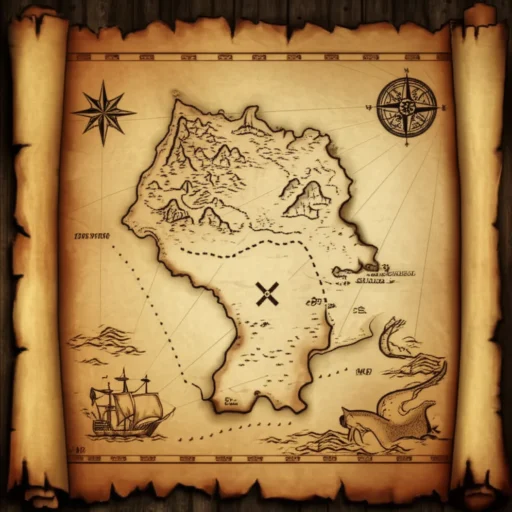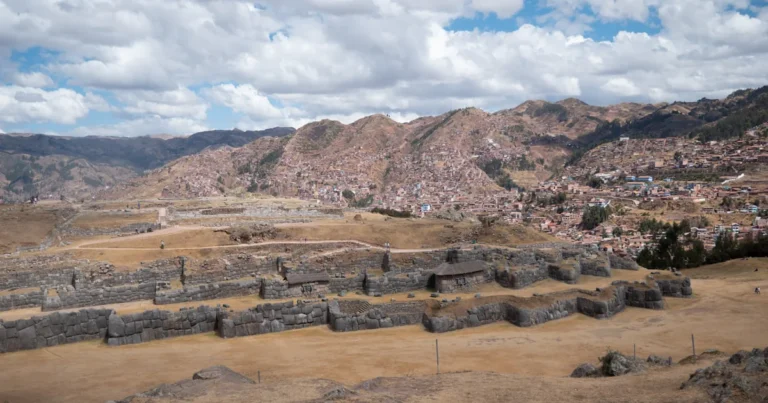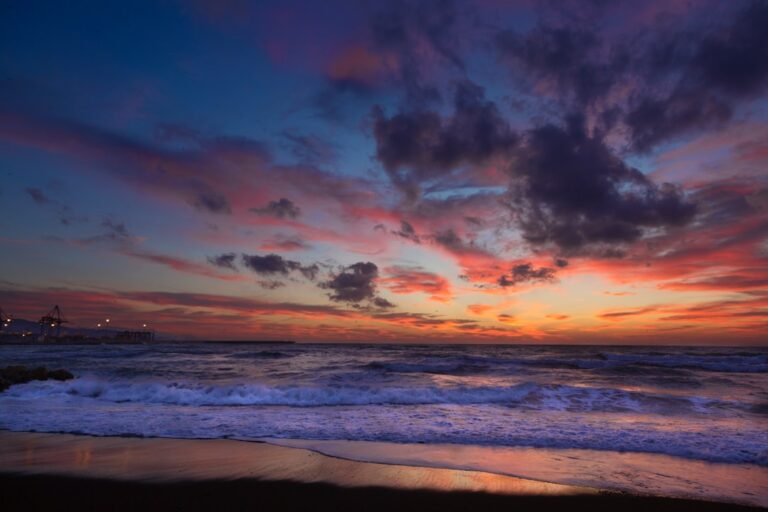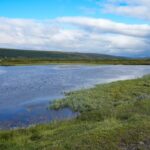Support our educational content for free when you purchase through links on our site. Learn more
🌿 Garden of Eden Location: 10 Fascinating Theories Unveiled (2025)
Have you ever wondered where the legendary Garden of Eden might have been? For centuries, explorers, theologians, and historians have chased this elusive paradise, piecing together cryptic biblical clues and ancient geography to pinpoint its exact spot. From the fertile plains between the Tigris and Euphrates to the submerged valleys of the Persian Gulf, the quest for Eden is as much about human longing as it is about geography. But what if the Garden of Eden isn’t just a place on a map, but a symbol woven into the fabric of our collective imagination?
In this article, we unravel 10 captivating theories about Eden’s location, decode the biblical rivers’ mysteries, and explore why this paradise remains one of history’s greatest enigmas. Whether you’re an armchair adventurer or a serious seeker, prepare to dive deep into ancient lands, spiritual archetypes, and the ongoing search that blends history, myth, and faith.
Key Takeaways
- The Garden of Eden’s location remains a mystery, with top theories ranging from Mesopotamia’s fertile crescent to the Persian Gulf’s submerged plains.
- Biblical clues focus on four rivers—Pishon, Gihon, Tigris, and Euphrates—but their exact identities are debated.
- Some scholars view Eden as a spiritual archetype, representing paradise lost rather than a physical place.
- Modern archaeology and geology provide tantalizing hints but no definitive proof.
- The story of Eden continues to inspire art, literature, and culture worldwide.
Ready to explore the legends and landscapes of Eden? Let’s embark on this timeless journey together!
Table of Contents
- ⚡️ Quick Tips and Facts About Eden’s Location
- 📜 The Genesis Enigma: Unpacking the Garden of Eden’s Historical Roots
- 🗺️ Biblical Clues and Cryptic Cartography: Decoding Genesis 2:10-14
- 🕵️♀️ The Great Geographical Quest: Top Proposed Locations for Eden’s Lost Paradise
- 1. 🏞️ The Mesopotamian Cradle: Between the Tigris and Euphrates
- 2. 🌊 The Persian Gulf Submarine Theory: A Submerged Eden?
- 3. ⛰️ The Armenian Highlands: Source of the Great Rivers
- 4. 🇹🇷 Eastern Turkey: A Land of Ancient Springs and Biblical Connections
- 5. 🇮🇱 The Levant and Ancient Israel: A Spiritual Home for Paradise?
- 6. 🇪🇹 Africa’s Horn: Ethiopia and the Blue Nile Connection
- 7. 🇧🇭 The Dilmun Connection: Bahrain and the Land of Immortality
- 8. 🌐 Beyond Earthly Bounds: A Metaphorical or Spiritual Eden?
- 9. 🗺️ The Caspian Sea Region: An Overlooked Candidate?
- 10. ❓ Other Intriguing (and Sometimes Outlandish) Theories
- 🤔 Why So Elusive? The Challenges of Pinpointing Eden’s Exact Spot
- ✨ Eden Beyond Geography: The Garden as a Spiritual Archetype and Human Longing
- 🎨 Echoes of Eden: How the Paradise Narrative Shapes Art, Literature, and Pop Culture
- 🔍 The Search Continues: Modern Expeditions, Scholarly Debates, and Archaeological Pursuits
- ❌ Debunking Myths and Misconceptions About Eden’s Whereabouts
- 💡 Quick Tips for Aspiring Eden Explorers (and Armchair Adventurers!)
- ✅ Conclusion: The Enduring Mystery of Paradise Lost and Found
- 🔗 Recommended Links: Dive Deeper into Eden’s Lore
- ❓ FAQ: Your Burning Questions About the Garden of Eden Answered
- 📚 Reference Links: Our Sources for This Epic Journey
⚡️ Quick Tips and Facts About Eden’s Location
As historians at History Hidden™, specializing in Discover Hidden History Facts, we’ve delved into the mysteries of the Garden of Eden. To start your journey, here are some quick tips and facts:
- The Garden of Eden is described in the Bible as a paradise created by God, with every tree that is pleasant to the sight, and good for food.
- The location of the Garden of Eden is still a topic of debate among scholars and historians, with various theories pointing to different regions, including Mesopotamia, Armenia, and even the Persian Gulf.
- According to Genesis 2:10-14, the Garden of Eden was watered by a river that split into four headwaters: Pishon, Gihon, Tigris, and Euphrates.
- The concept of the Garden of Eden has been influential in art, literature, and culture, symbolizing a lost paradise or a utopian society.
- For more information on biblical mysteries, visit our article on Bible Mysteries.
- Explore the fascinating world of Folklore and Legends at https://www.historyhidden.org/category/folklore-and-legends/ and Mythology Stories at https://www.historyhidden.org/category/mythology-stories/.
📜 The Genesis Enigma: Unpacking the Garden of Eden’s Historical Roots
The story of the Garden of Eden is deeply rooted in biblical history, with accounts in Genesis 2-3 and Ezekiel 28 and 31. To understand the historical context, let’s break down the narrative:
The Creation Story
The Bible describes God creating Adam and placing him in the Garden of Eden, eastward in Eden. The garden was filled with every tree that is pleasant to the sight, and good for food, including the tree of life and the tree of knowledge of good and evil.
The Four Rivers
The Garden of Eden was watered by a river that split into four headwaters: Pishon, Gihon, Tigris, and Euphrates. These rivers are described as flowing through various lands, including Havilah, Cush, and Asshur.
Historical Significance
The Garden of Eden has been a topic of interest for centuries, with various interpretations and theories about its location and significance. Some scholars believe it was a real place, while others see it as a metaphorical or spiritual concept.
🗺️ Biblical Clues and Cryptic Cartography: Decoding Genesis 2:10-14
To uncover the secrets of the Garden of Eden’s location, let’s examine the biblical clues in Genesis 2:10-14:
💧 The Four Rivers of Paradise: Pishon, Gihon, Tigris, Euphrates
The Bible describes the four rivers as follows:
- Pishon: Winds through Havilah, where there is gold, bdellium, and onyx.
- Gihon: Winds through Cush (Ethiopia).
- Tigris: Runs along the east side of Asshur.
- Euphrates.
🌍 The Lands of Havilah and Cush: Ancient Geographical Markers
The lands of Havilah and Cush are mentioned as geographical markers, but their exact locations are still debated among scholars.
- Havilah is associated with the Pishon River and is said to be a land of gold, bdellium, and onyx.
- Cush is associated with the Gihon River and is believed to be located in Ethiopia.
🕵️♀️ The Great Geographical Quest: Top Proposed Locations for Eden’s Lost Paradise
The search for the Garden of Eden’s location has been a longstanding quest, with various theories and proposals over the centuries. Here are some of the top proposed locations:
- 🏞️ The Mesopotamian Cradle: Between the Tigris and Euphrates
Many scholars believe the Garden of Eden was located in Mesopotamia, between the Tigris and Euphrates rivers. - 🌊 The Persian Gulf Submarine Theory: A Submerged Eden?
Some researchers propose that the Garden of Eden was located in the Persian Gulf, which was once a fertile valley before being submerged by the sea. - ⛰️ The Armenian Highlands: Source of the Great Rivers
The Armenian Highlands have been suggested as a possible location for the Garden of Eden, with the Araxes River being identified as the Pishon River. - 🇹🇷 Eastern Turkey: A Land of Ancient Springs and Biblical Connections
Eastern Turkey has been proposed as a possible location, with its ancient springs and biblical connections making it an attractive candidate. - 🇮🇱 The Levant and Ancient Israel: A Spiritual Home for Paradise
Some scholars believe the Garden of Eden was located in the Levant, with ancient Israel being a spiritual home for the paradise. - 🇪🇹 Africa’s Horn: Ethiopia and the Blue Nile Connection
Ethiopia has been suggested as a possible location, with the Blue Nile River being identified as the Gihon River. - 🇧🇭 The Dilmun Connection: Bahrain and the Land of Immortality
The ancient civilization of Dilmun, located in present-day Bahrain, has been linked to the Garden of Eden, with its reputation as a land of immortality. - 🌐 Beyond Earthly Bounds: A Metaphorical or Spiritual Eden?
Some scholars propose that the Garden of Eden was not a physical location, but rather a metaphorical or spiritual concept, representing a state of paradise or utopia. - 🗺️ The Caspian Sea Region: An Overlooked Candidate
The Caspian Sea region has been suggested as a possible location, with its unique geography and climate making it an attractive candidate. - ❓ Other Intriguing (and Sometimes Outlandish) Theories
There are many other theories and proposals, some of which may seem intriguing or even outlandish, but all contribute to the ongoing quest to uncover the secrets of the Garden of Eden.
🤔 Why So Elusive? The Challenges of Pinpointing Eden’s Exact Spot
Despite the many theories and proposals, the exact location of the Garden of Eden remains elusive. Several challenges contribute to this:
- The biblical description of the Garden of Eden is cryptic, with many interpretations and translations.
- The geography of the region has changed significantly over time, making it difficult to pinpoint the exact location.
- The search for the Garden of Eden is often driven by theological or ideological agendas, which can cloud the pursuit of historical accuracy.
✨ Eden Beyond Geography: The Garden as a Spiritual Archetype and Human Longing
The Garden of Eden represents a spiritual archetype, symbolizing a state of paradise or utopia. This concept has been influential in art, literature, and culture, with many works exploring the theme of lost paradise or human longing.
- The Garden of Eden has been depicted in various forms of art, from paintings to sculptures, often symbolizing a utopian society or a state of innocence.
- Literature has also been inspired by the Garden of Eden, with works such as John Milton’s Paradise Lost exploring the theme of human longing and the fall of man.
🎨 Echoes of Eden: How the Paradise Narrative Shapes Art, Literature, and Pop Culture
The concept of the Garden of Eden has had a profound impact on art, literature, and pop culture, with many works drawing inspiration from the paradise narrative.
- Music: The theme of paradise lost has been explored in various genres, from classical to rock music.
- Film: The Garden of Eden has been depicted in numerous films, often symbolizing a utopian society or a state of innocence.
- Literature: The concept of the Garden of Eden has been explored in various literary works, from poetry to novels, often symbolizing human longing or the search for paradise.
🔍 The Search Continues: Modern Expeditions, Scholarly Debates, and Archaeological Pursuits
The search for the Garden of Eden continues, with modern expeditions, scholarly debates, and archaeological pursuits shedding new light on the topic.
- Archaeological discoveries: Recent discoveries in the Middle East have provided new insights into the history and culture of the region, potentially shedding light on the location of the Garden of Eden.
- Scholarly debates: Ongoing debates among scholars and historians continue to refine our understanding of the Garden of Eden, with new theories and proposals emerging.
- Modern expeditions: Modern expeditions and explorations are underway, using advanced technologies and techniques to search for the Garden of Eden.
❌ Debunking Myths and Misconceptions About Eden’s Whereabouts
Several myths and misconceptions surround the Garden of Eden, which need to be debunked:
- Myth: The Garden of Eden was located in a specific, identifiable location.
- Reality: The exact location of the Garden of Eden remains elusive, with many theories and proposals.
- Myth: The Garden of Eden was a physical location, rather than a metaphorical or spiritual concept.
- Reality: The concept of the Garden of Eden represents a spiritual archetype, symbolizing a state of paradise or utopia.
💡 Quick Tips for Aspiring Eden Explorers (and Armchair Adventurers!)
For those interested in exploring the Garden of Eden, here are some quick tips:
- Start with the basics: Read the biblical account of the Garden of Eden in Genesis 2-3.
- Explore scholarly debates: Delve into the ongoing debates among scholars and historians to refine your understanding of the topic.
- Join online communities: Connect with other enthusiasts and explorers through online forums and social media groups.
- Support archaeological pursuits: Consider supporting archaeological expeditions and research initiatives to uncover new insights into the Garden of Eden.
✅ Conclusion: The Enduring Mystery of Paradise Lost and Found

After our deep dive into the Garden of Eden’s location, one thing is crystal clear: the mystery remains as tantalizing as ever. From ancient Mesopotamia’s fertile crescent to the submerged valleys of the Persian Gulf, and from the Armenian Highlands to the spiritual realms of metaphor, every theory adds a new layer to this timeless puzzle.
What makes the Garden of Eden so captivating isn’t just geography—it’s the universal human longing for paradise, innocence, and a return to a perfect state. Whether Eden was a literal place or a symbolic archetype, it continues to inspire explorers, theologians, artists, and dreamers alike.
We’ve seen how the biblical rivers—Pishon, Gihon, Tigris, and Euphrates—offer clues yet also confound with their elusive identities. Modern geology, archaeology, and theology all weigh in, sometimes agreeing, often diverging. The shifting landscapes over millennia, compounded by events like the biblical Flood, make pinpointing Eden’s exact coordinates a Herculean task.
So, should you pack your bags for Eastern Turkey, dive into the Persian Gulf, or wander the deserts of Mesopotamia? Maybe! But remember, Eden’s true location might forever be a blend of history, myth, and spiritual longing—a paradise lost and yet always found in our collective imagination.
Ready to keep exploring? Dive into the recommended resources below and keep the quest alive!
🔗 Recommended Links: Dive Deeper into Eden’s Lore
Books to fuel your Eden explorations:
- The Lost World of Genesis One by John H. Walton — Amazon
- Paradise Lost by John Milton — Amazon
- The Garden of Eden: A Modern Landscape by John R. Hinnells — Amazon
- Where Was Eden? by William F. Albright — Amazon
Explore archaeological and biblical studies:
- Institute for Creation Research — https://www.icr.org/
- Bible Study Tools: Where Is the Garden of Eden? — https://www.biblestudytools.com/bible-study/topical-studies/where-is-the-garden-of-eden.html
❓ FAQ: Your Burning Questions About the Garden of Eden Answered
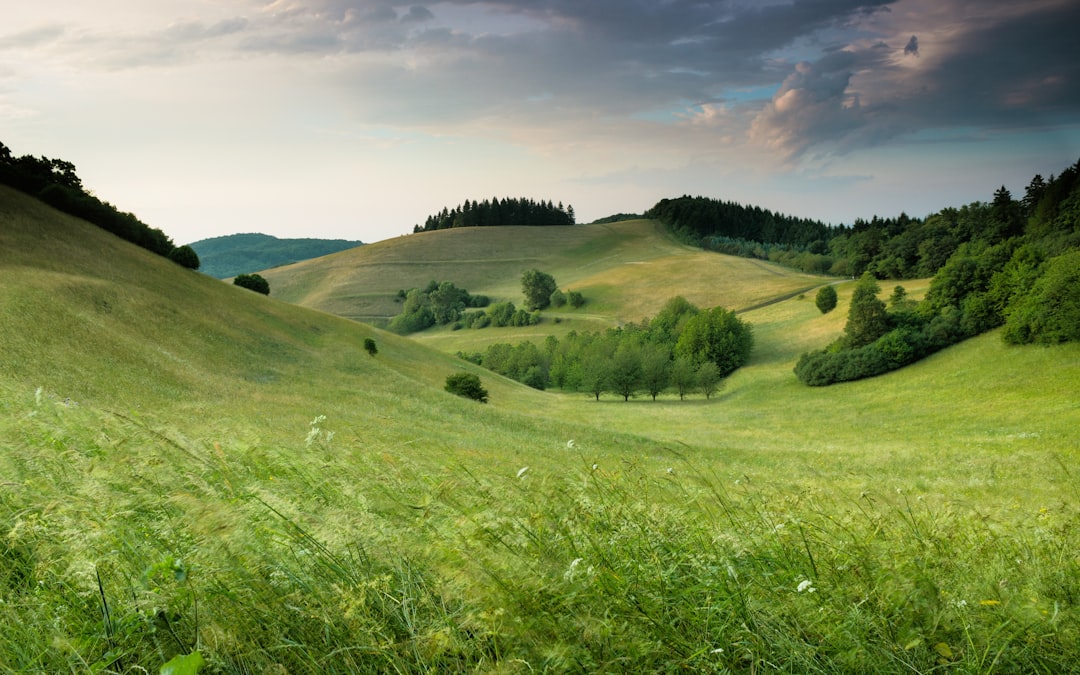
Where is the Garden of Eden mentioned in the Bible?
The Garden of Eden is primarily described in Genesis chapters 2 and 3, where God places Adam and Eve in a lush garden filled with every tree that is pleasant and good for food. Additional references appear in Ezekiel 28 and 31, and the concept of paradise reemerges in Revelation 22 with the tree of life. These passages collectively shape the biblical narrative of Eden as both a physical and spiritual paradise.
Read more about “15 Unsolved Bible Mysteries That Will Leave You Questioning Everything! 🔍”
What are the theories about the location of the Garden of Eden?
There’s a rich tapestry of theories, including:
- Mesopotamia: Between the Tigris and Euphrates rivers, often considered the “cradle of civilization.”
- Persian Gulf: The idea that Eden was submerged after sea levels rose post-Flood.
- Armenian Highlands and Eastern Turkey: Sources of the great rivers mentioned in Genesis.
- Ethiopia and the Horn of Africa: Linked to the Gihon River and the land of Cush.
- Dilmun (Bahrain): An ancient paradise-like civilization.
- Metaphorical interpretations: Viewing Eden as a spiritual or allegorical concept rather than a physical place.
Each theory has its merits and challenges, reflecting the complexity of matching ancient texts with modern geography.
Is the Garden of Eden a real place or just a myth?
This question straddles faith, history, and science. Many religious traditions hold Eden as a real, historical location where humanity’s story began. Others interpret it as a mythical or allegorical narrative symbolizing innocence, paradise, and the human condition. Archaeology has yet to uncover definitive evidence, but the enduring power of the Eden story transcends the need for physical proof.
What are the possible geographical locations of the Garden of Eden?
Based on biblical clues and historical geography, the most commonly proposed locations include:
- The Fertile Crescent (modern Iraq and surrounding areas)
- The Persian Gulf basin
- The Armenian Highlands (Turkey/Armenia border)
- The Horn of Africa (Ethiopia)
- The Levant region (Israel, Lebanon, Syria)
- Dilmun (modern Bahrain)
Each candidate aligns with some biblical descriptions but none perfectly fits all criteria, keeping the debate alive.
Did the Garden of Eden exist in ancient Mesopotamia?
Mesopotamia is the most widely accepted candidate due to the presence of the Tigris and Euphrates rivers and its status as an ancient cradle of civilization. The fertile lands and river systems closely match biblical descriptions. However, the identities of the Pishon and Gihon rivers remain uncertain, and geological changes over millennia complicate direct correlations.
Read more about “Unveiling the Truth: 10 Shocking Facts About Sumerian King List Accuracy (2025) 👑”
What are the similarities between the Garden of Eden and other ancient paradises?
Eden shares motifs with other ancient paradise myths:
- Dilmun (Sumerian paradise) described as a pure, sacred land of immortality.
- Greek Garden of the Hesperides, a mythical garden with golden apples.
- Persian paradise gardens, walled and irrigated spaces symbolizing divine order.
These parallels suggest a shared human fascination with an idealized, sacred garden representing harmony and divine presence.
Can archaeology help us find the exact location of the Garden of Eden?
While archaeology has uncovered ancient civilizations and landscapes that align with parts of the Eden narrative, no definitive archaeological evidence pinpoints Eden’s exact location. Challenges include:
- Geological changes (floods, sedimentation, tectonics)
- The symbolic nature of biblical texts
- The passage of thousands of years
However, ongoing excavations and advances in technology (like satellite imaging and underwater archaeology) continue to provide tantalizing clues.
📚 Reference Links: Our Sources for This Epic Journey
- Wikipedia: Garden of Eden — https://en.wikipedia.org/wiki/Garden_of_Eden
- Answers in Genesis: Where Was the Garden of Eden Located? — https://answersingenesis.org/genesis/garden-of-eden/where-was-the-garden-of-eden-located/
- Bible Study Tools: Where Is the Garden of Eden? — https://www.biblestudytools.com/bible-study/topical-studies/where-is-the-garden-of-eden.html
- Institute for Creation Research — https://www.icr.org/
- National Geographic: Ancient Mesopotamia — https://www.nationalgeographic.com/culture/article/king-sargon-akkad
- The British Museum: Mesopotamia — https://www.britishmuseum.org/collection/galleries/mesopotamia
We hope this comprehensive exploration has sparked your curiosity and deepened your appreciation for one of history’s most enduring mysteries. Keep searching, keep questioning, and who knows? Maybe one day, the Garden of Eden will reveal its secrets to us all. 🌿✨
